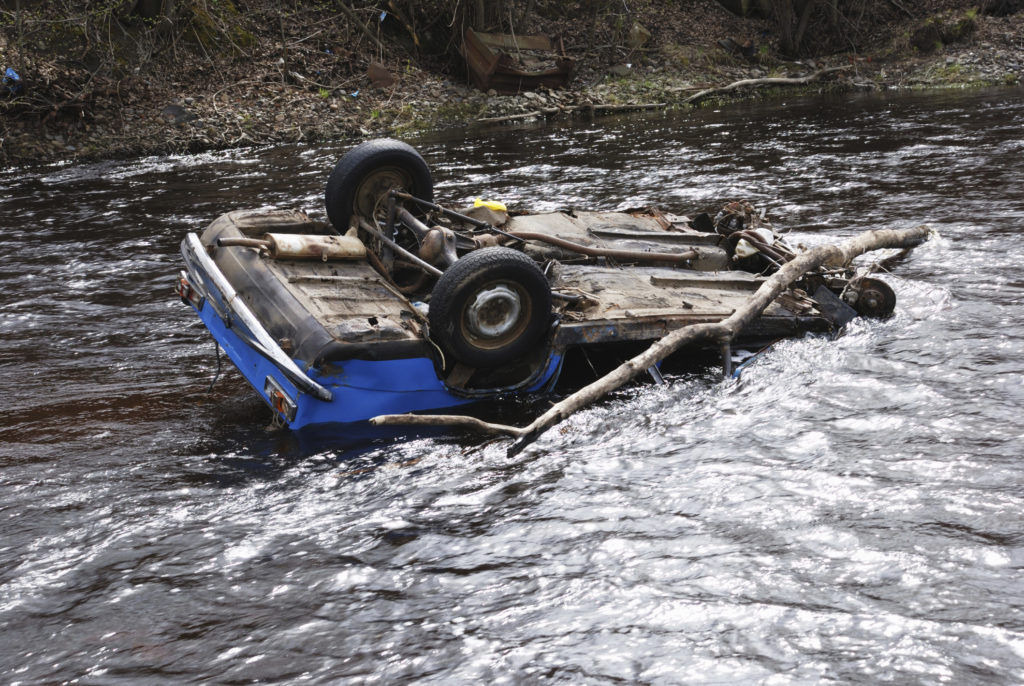Tornados
Much like a blizzard, a tornado may change your G.O.O.D.I.E Bag to more of a “Stay in Place” or S.I.P Bag. Tornados may seem to offer more mobility than blizzards, but they do not. What tornados do offer, however, is a tad bit more predictability, if you verse yourself properly. One of the most important things you can do to prevent being injured in a tornado is to be alert to the onset of severe weather. Most deaths and serious injuries happen to people who are unaware and uninformed. Young children or the mentally challenged may not recognize an oncoming dangerous situation. The ill, elderly, or invalid may not be able to reach shelter in time. Those who ignore the weather because of indifference or overconfidence may not perceive the danger. Stay aware, and you will stay alive.
Remember: If a tornado watch is issued for your area, it means that a tornado is “Possible.” If a tornado warning is issued, it means that a tornado has actually been spotted, or is strongly indicated on radar, and it is time to go to a safe shelter immediately.
Be alert to what is happening outside as well. Here are some of the things that people describe when they tell about a tornado experience:
- A sickly greenish or greenish black color to the sky.
- If there is a watch or warning posted, then the fall of hail should be considered as a real danger sign. Hail can be common in some areas, however, and usually has no tornado activity along with it.
- A strange quiet that occurs within or shortly after the thunderstorm.
- Clouds moving by very fast, especially in a rotating pattern or converging toward one area of the sky.
- A sound a little like a waterfall or rushing air at first, but turning into a roar as it comes closer. The sound of a tornado has been likened to that of both railroad trains and jets.
- Debris dropping from the sky.
- An obvious “funnel-shaped” cloud that is rotating, or debris such as branches or leaves being pulled upwards, even if funnel clouds are not visible.
If you see a tornado and it is not moving to the right or to the left relative to trees or power poles in the distance, it may be moving towards you! Remember that although tornadoes usually move from southwest to northeast, they also move towards the east, the southeast, the north, and even northwest.
Encourage your family members to plan for their own safety in many different locations. It is important to make decisions about the safest places well before you ever have to go to them.
In Homes or Small Buildings
The best places are:
In a storm shelter specifically designed for that use–within the basement or outside the home entirely. Some companies manufacture pre-fab shelters that you drop into a hole in the ground, and that blends in with your home’s landscaping(some more, some less.)
In a basement, away from the west and south walls. Hiding under a heavy worktable or under the stairs will protect the family from crumbling walls, chimneys, and large airborne debris falling into the cellar. A family in the April 8th 1998 tornado in the Birmingham, Alabama area survived because a hutch toppled and was held up by the dining room table they were under. That hutch helped deflect the debris that would have struck them. Old blankets, quilts and an unused mattress will protect against flying debris, but they should be stored in the shelter area. Precious time can be lost by trying to find these items at the last minute.

- In a small, windowless, first floor, interior room-like a closet or bathroom. The bathtub and commode are anchored directly into the ground, and sometimes are the only thing left in place after the tornado. Getting into the bathtub with a couch cushion over you gives you protection on all sides, as well as an extra anchor to the foundation. Plumbing pipes may or may not help hold the walls together, but all the extra framing that it takes to put a bathroom together may make a big difference. If there is no downstairs bathroom and the closets are all packed with “stuff,” a hall may be the best shelter. Put as many walls as you can between yourself and the tornado. In a pinch, put a metal trash over as much of you as you can. It will keep some flying debris from injuring you. Even that may make the difference between life and death.
Wherever it is, the shelter should be well known by each member of the family. If you and your family will conduct annual emergency drills (fire, tornado, etc.) everyone will remember what to do and where to go when a tornado is approaching- -automatically and without panic. Choose a friend or family member in another part of town or elsewhere to be a “contact person” that will be called by everyone should the family members become separated.
Tornado preparation can overlap in many ways with hurricane preparation, with one major caveat. The reason we look at hurricanes as more of a “go” scenario is because the flooding they cause creates a comparative disadvantage with staying indoors as you can easily be flooded to death. Since water is heavier than rock, we are more likely to take our chances on the road during a hurricane than risk being trapped inside and possibly drowned by massive amounts of flooding water. Tornados, on the other hand, create more risks out in the open as they can lift and carry relatively light items such as cars or human beings. This is why it makes sense to get entrenched for a tornado, as their destructive powers can do comparatively less damage if you stay indoors.
Shopping Centers, Hospitals and Factories
Go to interior rooms and halls on the lowest floor. Stay away from glass enclosed places or areas with wide-span roofs such as auditoriums, theaters, and warehouses. Crouch down and cover your head. Deaths have occurred in large, single story department stores. They have occurred inside the building when the roof or wide span brick walls, which collapsed. A corner would be safer than the middle of the wall. A bathroom, closet, office, or maintenance room with short walls would be the safest area, especially if it was on the north or east side of the building.
In Schools
Leave auditoriums, gyms, and other free-span rooms, exiting in an orderly fashion. Go to interior rooms and halls on the lowest floor, but avoid halls that open to the outside in any direction. If there are no interior hallways, avoid those that open to the southwest, south, or west, since that is the usually the direction the tornado will come. Stay away from glass, both in windows and doors. Crouch down, and make as small a “target” as possible. If you have something to cover your head, do so, otherwise, use your hands. Don’t assume that there will always be a teacher or other adult there to tell you what to do–if there is, you should follow their direction, but you need to know these things too.
Peak time for tornadoes to strike varies from region to region. In some southeastern states, early morning tornadoes are almost as common as late afternoon ones. In western and northern states, peak hours are from 3 to 7 PM, just at the end of the school, but including the hours of afterschool activities. If really severe weather is expected, your school may be dismissed early in order that you can reach home before the worst of the weather reaches the area. If you are on foot or riding a bike, it is doubly important that you go home immediately, and not linger with your friends. If caught in the open, you should seek a safe place immediately. The chances of encountering falling trees, power lines, and lightning is greater than encountering the tornado itself. The basement of a sturdy building would be best, but lying flat in a ditch or low-lying area may be the only thing available. A culvert in a ditch may be a good choice if there is no rain, but if there is rain, flash flooding may be more dangerous and likely than the tornado.
In a Car
If you are in a car, and you can see a tornado forming or approaching, you should leave the car and take shelter. You may think you can escape from the tornado by driving away from it, but you can’t know what you may be driving into. A tornado can blow a car off a road, pick a car up and hurl it, or tumble a car over and over. Many people have been killed in cars while they were trying to outrun the tornado, and although it is sometimes possible to escape, it is generally not a good idea.
An underpass may seem like a safe place, but may not be. While videos show people surviving under an underpass, those tornadoes have been weak. No one knows how survivable an underpass is in a strong or violent tornado. The debris flying under the underpass could be very deadly… head for a ditch.


